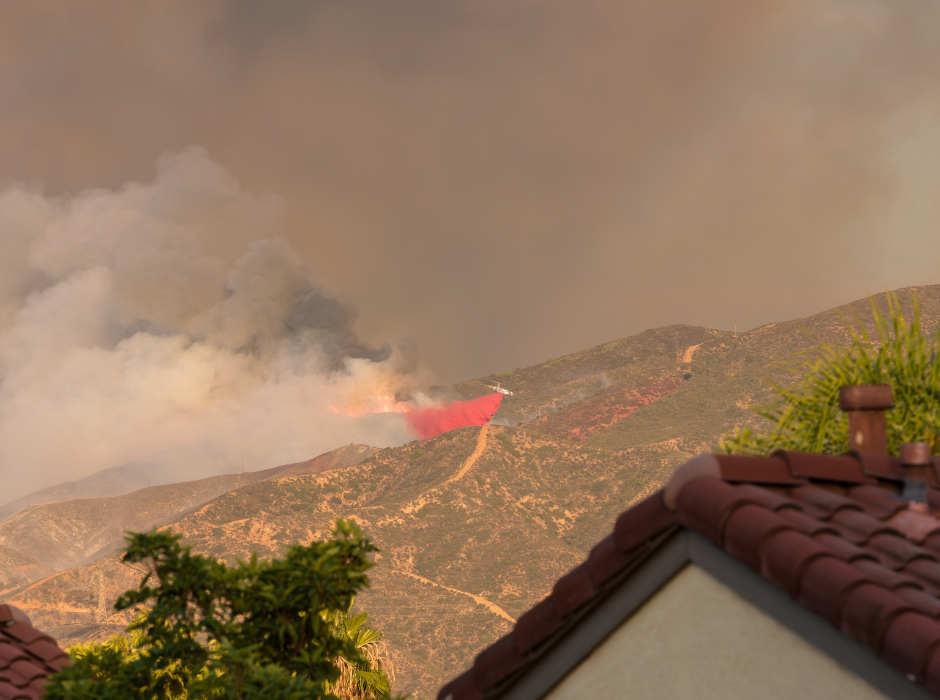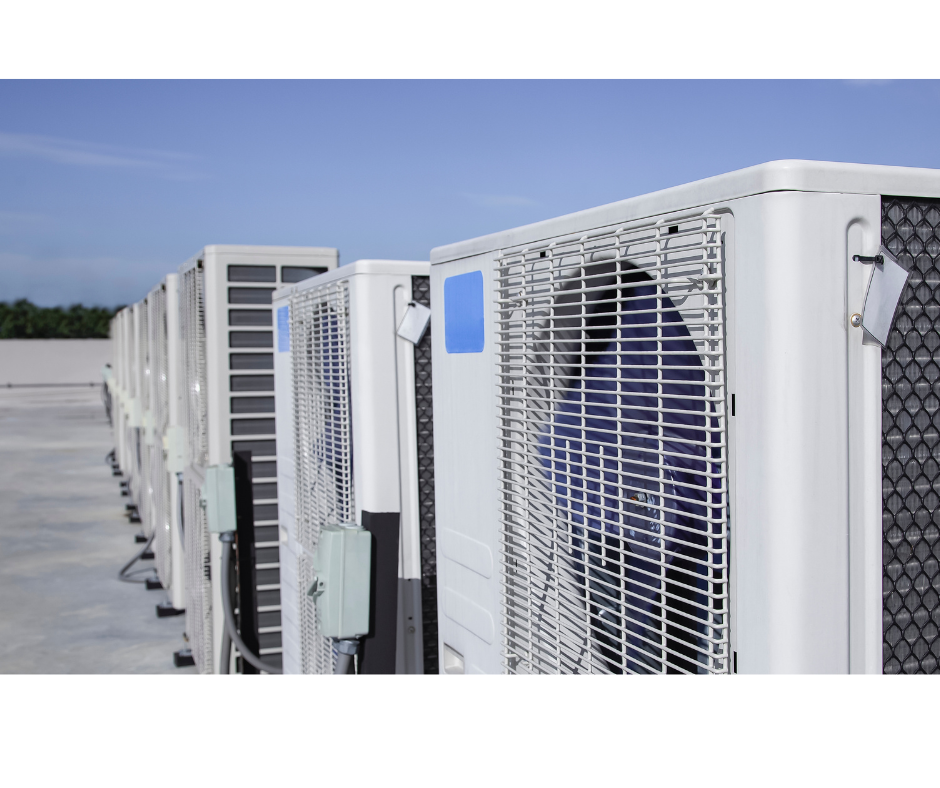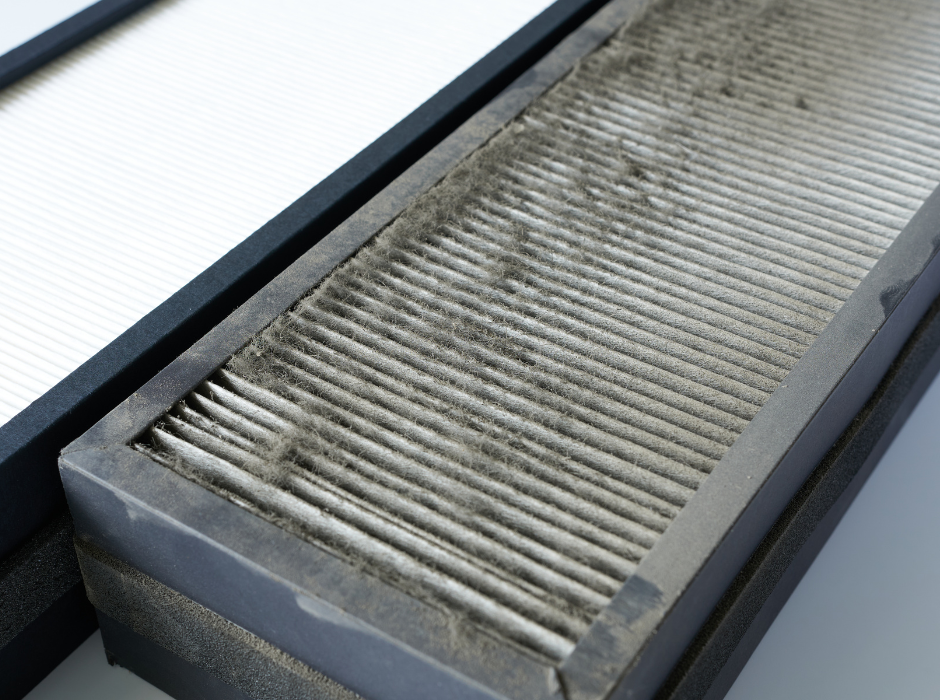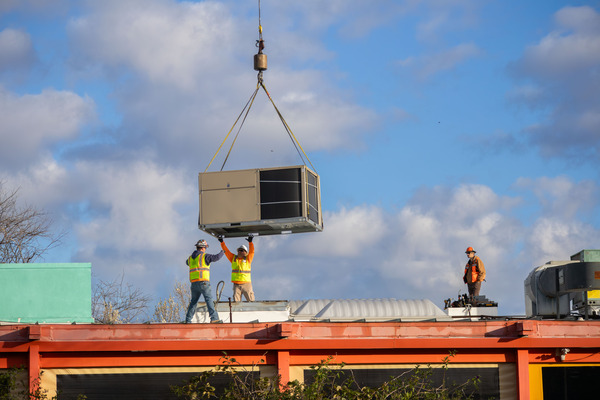Keeping Your Air Quality Healthy and Tenants Happy
Last November, ASHRAE (American Society of Heating, Refrigerating and Air-Conditioning Engineers) released new guidance on safeguarding indoor air quality in the event during smoke events in response to increasing wildfire threats.
With the rise in wildfire frequency and severity over the past few years, it’s important for commercial property managers and business owners to be equipped with a plan to manage indoor air quality in the event of a fire to keep occupants safe. 
Background:
Title 24 requires commercial air conditioning systems to bring in a certain amount of outside air under the premise that mixing “fresh” air with indoor air allows for healthy indoor air quality (IAQ). This works under ideal conditions, but is more of a problem when the outside air is filled with smoke. Ironically, the ideal solution is to turn off the AC system- although this is highly impractical. Short of that, there are some things that you can do to help the situation.
Preparation is Key
If living in such proximity to deadly wildfires isn’t stressful enough, it can be daunting to prepare your building for an unfortunate possible scenario such as hazardous air quality. With tenant retention and customer happiness on the line, we understand the importance of minimizing any business disruptions during emergencies.
Cooper Oates has a long history of helping building owners and managers in Sacramento optimize their HVAC systems to manage indoor air quality. Read below for our tips on keeping air quality safe inside your building during wildfires.
Managing Outside Air
The main goal when looking to protect your commercial building from smoke is to minimize outside air entering the building. This can be influenced by many factors such as building pressure, your HVAC equipment, and controls system. 
Maintain Positive Pressure
Maintaining positive building pressure is crucial to preserving healthy indoor air quality (IAQ), as this occurs when there is greater pressure inside the building than outside, preventing outside air from seeping in through doors, windows and cracks.
Use a Dedicated Outdoor Air System (DOAS)
Using a dedicated outdoor air system (DOAS) can also make a positive impact in minimizing the infiltration of unhealthy air that enters your building by conditioning the outside air separately from recirculated air. This helps rid the incoming air of contaminants before being dispersed into occupied spaces.
Economizer Considerations
Economizers, which use outside air to replace the mechanical cooling system when temperature allows, can in turn end up bringing more smoke and particulate matter into a building in the event of a fire. Therefore, it’s beneficial to minimize economizer use during periods of unhealthy air quality, while still maintaining ventilation requirements.
It’s challenging to find a “perfect” solution for economizers during a smoke event, as not many have the capacity to be triggered to a certain setting when air quality becomes dangerous. Manual approaches may be necessary, such as positioning dampers as to let in the minimum amount of outside air while still maintaining positive pressure. Sometimes, a more expedient alternative is to temporarily tape disposable filters on the economizer inlet for the duration of the heavy smoke.
Your commercial HVAC contractor will be able to help you find a plan to safely reduce contaminated outside air while maintaining optimal ventilation- so it’s important to discuss with a professional who can evaluate your building’s unique needs and the limitations of your equipment.
Stock Up on Filters
When the air quality is in the “unhealthy” zone, filters are often already sold out- so it’s essential to have stock ready in case fires affect your air quality. In addition, when it’s smokey, filters have a shorter lifespan- sometimes just a few days if the conditions are extreme. 
ASHRAE guidelines recommend stocking up on MERV 13 filters, a more effective option to the often-used MERV 10s. MERV 13s don’t last as long, but will be far more effective in filtering contaminants. (Many older systems don’t have the blower capacity to work with higher efficiency filters so this should be evaluated.)
Different Facilities, Different Requirements
Different types of commercial facilities, especially hospitals, may require different types of filters to maintain specific air quality standards. A qualified commercial HVAC contractor can advise you on which filter type is best to suit your needs when smoke levels are high- so get in touch to start preparing early.
Other Considerations
Taking additional measures, such as installing air sensing technology, can play an important role in ensuring your smoke management plan if you aren’t already monitoring your building’s air quality.
Create a Plan
The most important takeaway is to have a proper smoke mitigation plan in place. Without one, you’re gambling with your tenants’ health- and opening your business to possible legal risk.
You don’t need to navigate the intricacies of air quality management for your commercial building alone. Meet with a qualified commercial HVAC contractor to develop a plan suited to your facility.
Sacramento’s Premier Commercial HVAC Contractor
Cooper Oates can help you prepare your building for unplanned air quality emergencies by optimizing your current equipment or providing solutions for upgrades if deemed appropriate. We want the best outcome for your business and your customers. Let us know how we can help you by contacting us today.
for upgrades if deemed appropriate. We want the best outcome for your business and your customers. Let us know how we can help you by contacting us today.

